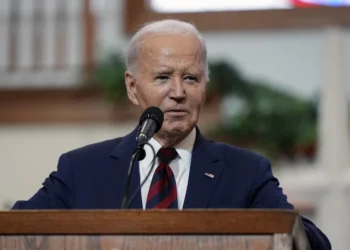It was just a vacation — a two-week getaway in 2017 for my wife Peggy and me to take in some springtime scenery in Holland and France, along with a few quick stops at spots of historic interest. Our trip just happened to span Memorial Day weekend back in the U.S.
What I did not expect was the emotional impact of that trip, with memories that never fail to come to mind on Memorial Day, even years later.
The first was a visit to the site of the WWII Battle of Arnhem, in the Netherlands. It was there that more than 10,000 British paratroopers, the forward element of a daring attempt by Allied forces late in the war to secure a direct path into Germany, were trapped deep in enemy-held territory. The attack failed, and all but about two thousand were killed or captured.
The battle was made famous by the book and movie “A Bridge Too Far” and is well-chronicled in history books — but our visit to the Arnhem Oosterbeck War Cemetery, the final resting place of 1,690 of the British and Polish troops killed in action there, transformed that excursion from an interesting history lesson to a deeply personal one.
The cemetery is serene and contemplative. Lush trees and vegetation surround a vast array of white headstones arranged symmetrically on a field of manicured grass. The whole scene is impressive, but it was when we stepped forward to look at those headstones that we began to grasp its true human dimension.
The very first one we came upon, purely by chance, was that marking the grave of one A.L. Mason, identifying him as a “Private in the King’s Own Scottish Borderer’s Airborne.” Private Mason died on September 21, 1944. He was 19 years old.
I know nothing of Private Mason’s life, of what circumstances conspired for him to be at that time and at that place, in service of his country, risking all to rid the world of the Nazi boot. What I do know, and is now engraved in my memory, is the inscription on his headstone:
“At the rising to the setting of the sun
I think of you, my darling boy.
Mother”
Try to multiply that mother’s daily grief by the millions who lost sons to WWII. You cannot; it’s incomprehensible.
Two days later, we were in Amsterdam at the Anne Frank House, now a top tourist attraction. We all know the Anne Frank story, and I had no doubt that our one-hour walk-through would be sobering and sad. But its physical impact is profound. Being in that place personalized Anne Frank’s life and death; for a moment, we could share the tiny space where, for over two years, she and her family hid from the monsters who ultimately succeeded in sending her to her death.
Anne Frank is just one of about six million Jews killed by the Nazis.
And then just a few days later, we visited the magnificent Normandy American Cemetery and Memorial, adjacent to the site of the D-Day landings in June 1944.
Some 10,652 American soldiers and sailors who died in the D-Day campaign are buried in that cemetery. Their graves are marked by a sea of crosses or stars of David, a visually stunning assembly, but only a small fraction of the over 400,000 American servicemen and women lost in that war.
The day was unseasonably wet, cold, and gray — fitting, we thought, not unlike June 6, 1944. By chance that morning, a touring chorus from Cornwall, England, gathered for an impromptu concert. The sound of their soaring voices in that sacred place was more inspirational than any church service I’ve ever attended. Peggy described it as “heavenly.”
The Visitors’ Center is interesting and informative, but here again, it was the visceral impact, the sense of physical proximity with so many Americans who came to that place 80 years ago in service to our country — and never returned — that was so deeply moving.
Since our nation’s birth, approximately 1.3 million military service members have lost their lives in the line of duty, in peacetime and wartime. While setting aside one day each year to honor them is nice, it doesn’t even scratch the surface of the debt we owe them.
Our brief visits to Arnhem, Amsterdam, and Normandy call to mind several key perspectives:
- The human consequences of war are simply too great to gauge with statistics. The first step in grasping war’s enormous impact is to personalize it — to
consciously imagine the circumstances of an A.L. Mason, an Anne Frank, or an American buried at Normandy in a grave marked “known but to God,” and the lifelong effects on their loved ones. - As Americans, we are relatively isolated from the world’s turmoil, and few of us feel the true burden of our military engagements in faraway places. It is far too easy for us to lose sight of the fragility of our freedom and security.
- Freedom has never been free. The price is steep and is inevitably paid by just a few — those who lose their lives in service to our country, and the untold mothers, fathers, siblings, spouses, and sons and daughters who never see them again.
There’s never a possibility of a refund to those who give much more than their share. We can only treasure, preserve and protect their precious gift — and never forget its givers, this day and every day.
















